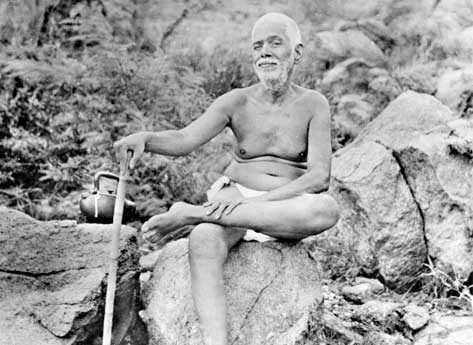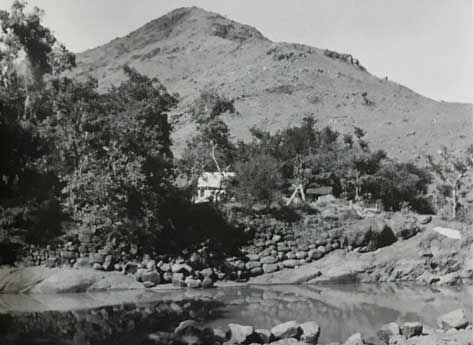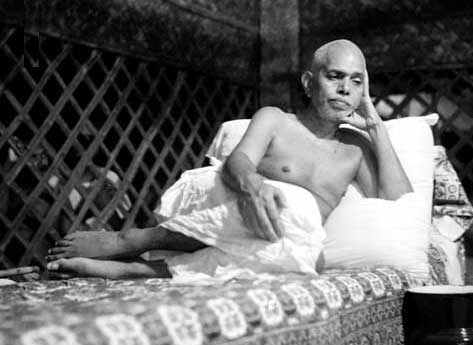9. More Jobs, Lessons
THE STORY OF SRI ANNAMALAI SWAMI
Bhagavan continued to give me construction work, and invaluable lessons with that
Construction work kept Sri Annamalai Swami continuously busy for nearly 10 years. Bhagavan had him build the new dining room, kitchen, Mother’s temple and gave him several miscellaneous jobs. The earnest and obedient disciple carried out his Master’s instructions to the letter, never questioning, never using his own judgement. This brought him very close to Bhagavan, and blessed him in ways that many would be envious of. Swami’s narration below confirms this.
Baesh!
Until 1938 I was engaged more or less full-time on building work. The biggest job I undertook during this period was supervising the construction of the new dining room and kitchen. Bhagavan took a keen interest in the building, guiding me at all stages of the work. Daily evening he would tell me what work should be done the following day.
One evening, due to a heavy storm I could not get the plans from Bhagavan. The next day morning I went and asked him, ‘What is the plan for today?’
Bhagavan replied, ‘Swami is within you. Go and do the work.’
This was something of a shock for me because I was accustomed to depending on Bhagavan for advice. But before I went to the site and issued my instructions I uttered a silent prayer to Bhagavan, asking him to guide me in the work. .
Bhagavan’s refusal to help me indicated that he was now satisfied that I had learned enough to manage the construction on my own.

Removing Sandals
Since I was out in the sun all the time, I had an umbrella to protect me and dark glasses to protect my eyes from the lime dust. When Bhagavan came to see what I was doing, I removed my sandals and lowered my umbrella as a mark of respect. Bhagavan immediately told me off.
‘Why do you do these things when you see me? Why are you giving me special attention like this? These things are to protect you from the sun and the dust. I will only come to see you in future if you promise to keep your umbrella up and your sandals on.’
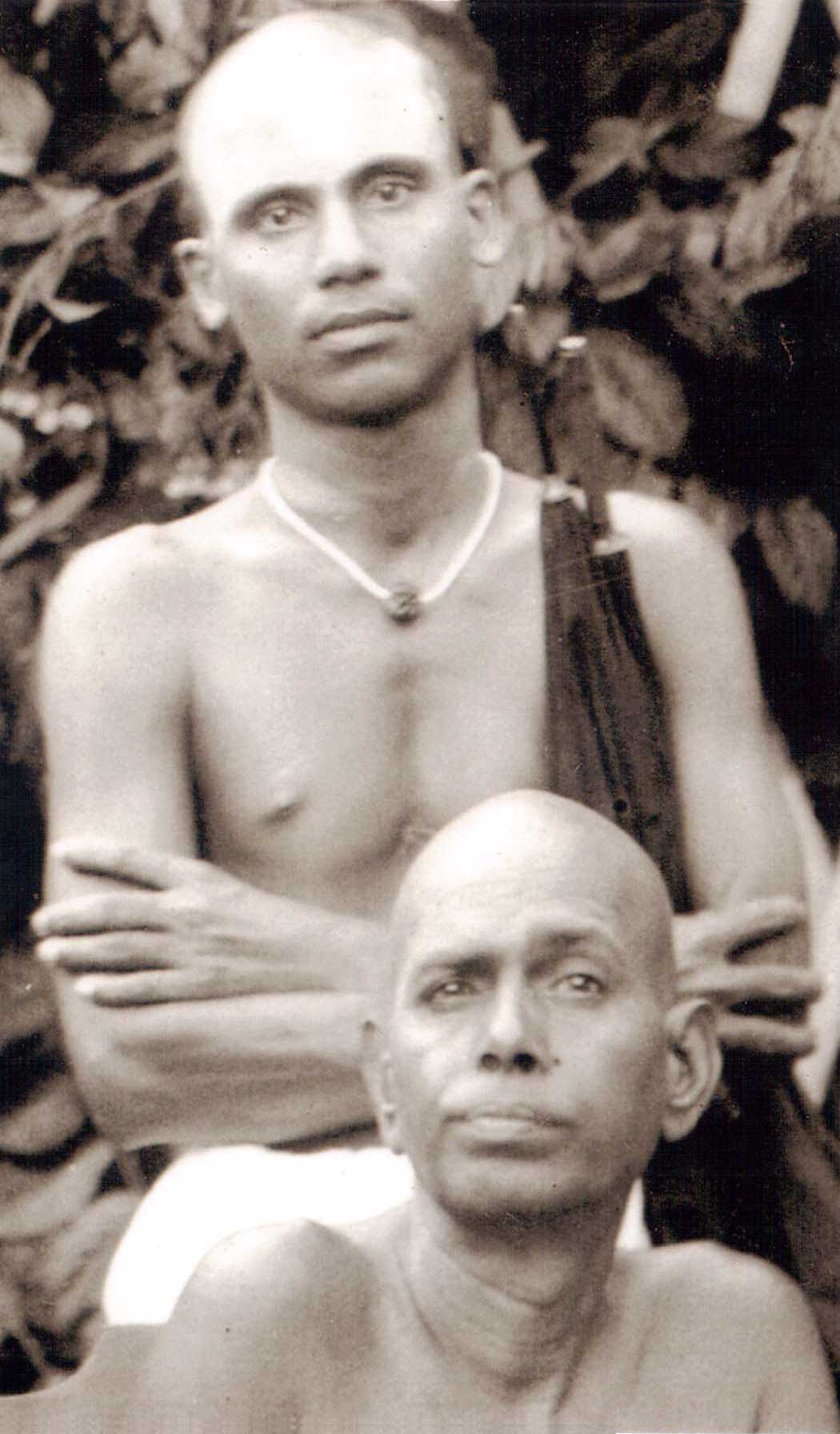
Egoistic thoughts disappear
One day as I was supervising work on the dining room I became aware that my ego was getting very strong. I could feel an unwanted sense of pride and achievement growing within me. ‘I am responsible for all this! I alone am supervising this great work!’ While I was afflicted with these strong thoughts Bhagavan came to see me.
He confirmed that something unusual had happened by quoting a well-known Tamil proverb: ‘The bad spirits will leave when they see the priest.’
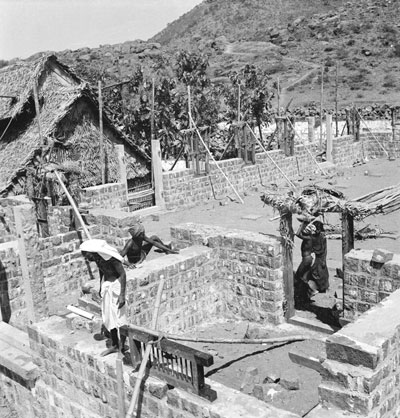
Sexual desires
I used to hire both men and women to work on the dining room. Some of the women were quite attractive and I must confess that I was occasionally troubled by sexual desires. I had talked to Bhagavan about this problem quite early in my career in the ashram.
I had told him, ‘I don’t want Moksha (liberation). I just want that the desire for women should not enter my mind.’
On that occasion Bhagavan laughed and said , ‘All the mahatamas are striving only for this’.
His answer reassured me that I was not alone in suffering from this problem but it gave no clue as to how I might overcome it. I formed a theory that if I didn’t have to watch the women work all day it would be a lot easier to avoid sexual thoughts. In those days we used to pay women much less than men. It occurred to me that if I replaced all the women workers with a few men workers, for the price of a few annas I would be able to purchase a little peace of mind. I therefore told the women that there would be no more work from them in the future.
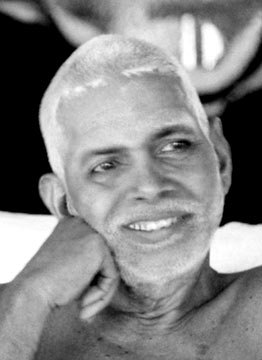
That night Bhagavan, as usual, enquired what work I planned to do the following day.
I told him, ‘Tomorrow I intend to put a lot of sand inside the building to bring the ground up to the level of the dining room floor.’
Bhagavan then enquired, ‘How many men and how many women have you engaged?’
I told Bhagavan that I had not hired any women and I explained my reasons to him. Bhagavan was not at all impressed with my explanation. He saw no reason why the women should suffer merely because I was unable to control my mind.
‘Why did you say that women workers were not longer needed?’ he asked. ‘You engage women workers. You engage women workers. You engage women workers.’
I knew that when Bhagavan wanted to stress the importance of a particular idea or phrase he would repeat it three times. I followed his instructions and rehired all the women.
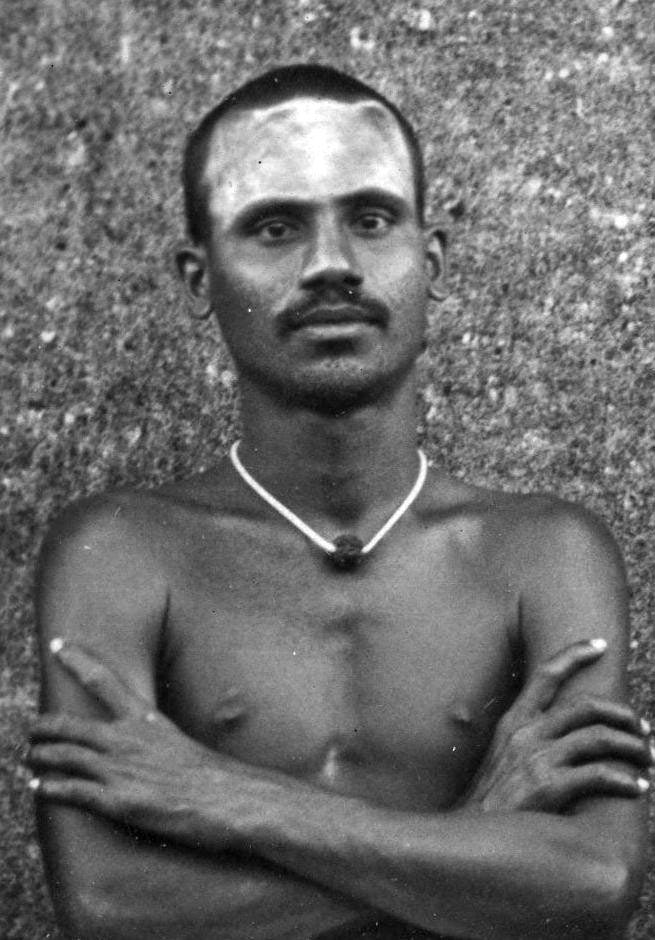
Another occasion
I can remember another occasion when my sexual thoughts almost got the better of me. It was about 1 p.m. in the middle of summer. I was sitting in front of the storeroom when I saw a very beautiful woman come for Bhagavan’s darshan. I was so captivated by her appearance and felt a strong sexual desire arise within me.
At that moment Bhagavan suddenly appeared and saw what state my mind was in. He called me outside and asked me to stand in the sun on a big rock which was near the storeroom. Because I had no sandals on, the heat from the rock caused a great pain in my feet. Bhagavan completely ignored my discomfort. For several minutes he calmly chatted about various building matters. The pain in my burning feet became almost unbearable but I didn’t dare to move because Bhagavan had specifically told me to stand on that rock. After some time the thought occurred to me that the pain I was experiencing had completely displaced the desire for this woman.
As soon as this thought entered my mind Bhagavan abruptly terminated our conversation and walked away. I happily took my burning feet back into the shade. Bhagavan’s treatment proved to be a complete cure. When the pain subsided I found that I had no further interest in the woman.
Dealing with Anger
I often had to get angry with the workers in order to get the work done. I discovered quite early in my career that if I didn’t shout a lot, the quantity and quality of the work deteriorated. On one occasion I went too far and actually hit one of the workers because he had deliberately disobeyed my instructions, which were given to me exactly by Bhagavan. A stone had to be cut exactly and Bhagavan had given me very precise orders, since it had to fit exactly right in a part of the dining room wall.
After giving the stone cutter precise instructions as to how to cut the stone so that it won’t break, I stepped aside to supervise some other work going on. The stone cutter ignored all my instructions and broke the stone, trying to cut it a different way.
When I returned and saw what he had done, I got so angry that I gave him a blow on the back. This happened at 9 a.m. For the rest of the day I felt very guilty about losing my temper in this way.
That evening, when I gave my daily report, I confessed to Bhagavan and apologised for my action.
Bhagavan asked me, ‘When did this anger come and when did you hit him?’
I told him that the incident had happened around 9 a.m that morning.
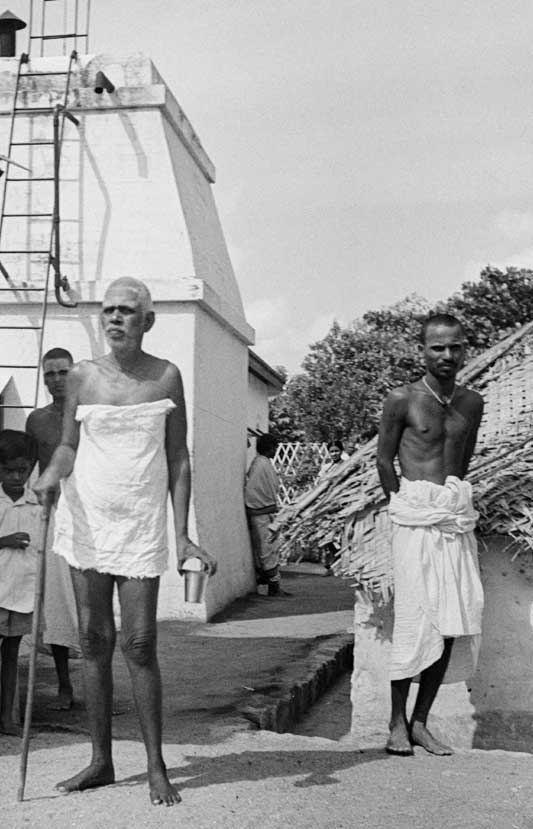
Bhagavan taught me
‘The anger that came at 9 a.m. has already gone,’ said Bhagavan. ‘Why are you still thinking that you got angry and hit someone? Why are you still carrying these thoughts in your mind? Instead of feeling guilty about what you have done, enquire, “To whom did all this anger come?” Find out the real nature of the person who got angry this morning.
For activity, that anger was needed. Now it is all over, you do not need to think about it any more. So drop that memory of anger and proceed with the next job.’
Following Bhagavan’s instructions to the letter
Throughout this narrative we have seen how Sri Annamalai Swami did everything he could to follow Bhagavan’s instructions exactly. Even if it meant great discomfort or put him in a bad position. There were numerous incidents where Bhagavan would tell Annamalai Swami to carry out a project, even big ones such as building a hospital, but with the added instruction that ‘if someone asked you who authorized this work, tell them that you are doing it on your own.’ One can only imagine the pressure, Swami had to deal with when managers such as Chinnaswami berated him for doing things on his own without getting their approval. Yet Annamalai Swami never budged. Even if Bhagavan did not come to his rescue. This attitude of unconditional surrender seems to have been ingrained in him from the beginning. Swami’s narration continues…
One of the final jobs on the dining room was putting the name of the building on the top of the eastern wall. The letters were to be constructed out of cement in a space about 2 1/2 feet long and nine inches high. Bhagavan himself wrote the Tamil word pākasālai, meaning dining room, in big letters on a piece of paper. He wanted to show me how to shape and space out the letters so that all the available space would be used.
A man called Srinivasa Rao who was watching all this came up to Bhagavan and said, ‘He’s just a country boy. He doesn’t even know how to write properly. I will do this job for him.
Bhagavan refused to let him take over. ‘Don’t interfere with his work,’ he said. ‘Go somewhere else and mind your own business.’
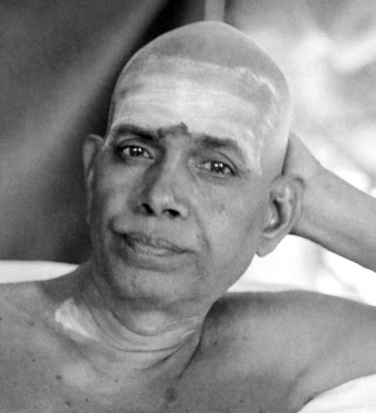
Since Bhagavan thus made it quite clear that he wanted me to do the work, I carried it out to the best of my ability. I put the year 1938 at the top, the world pākasālai below that in Tamil. Following another of Bhagavan’s suggestions, I wrote the name Sri Ramanasramam underneath in dēvanāgari script.
Below is a photograph of that finished dining room, with Bhagavan sitting by the entrance. The name and date plaque that Annamalai Swami made is at the top on the skyline.
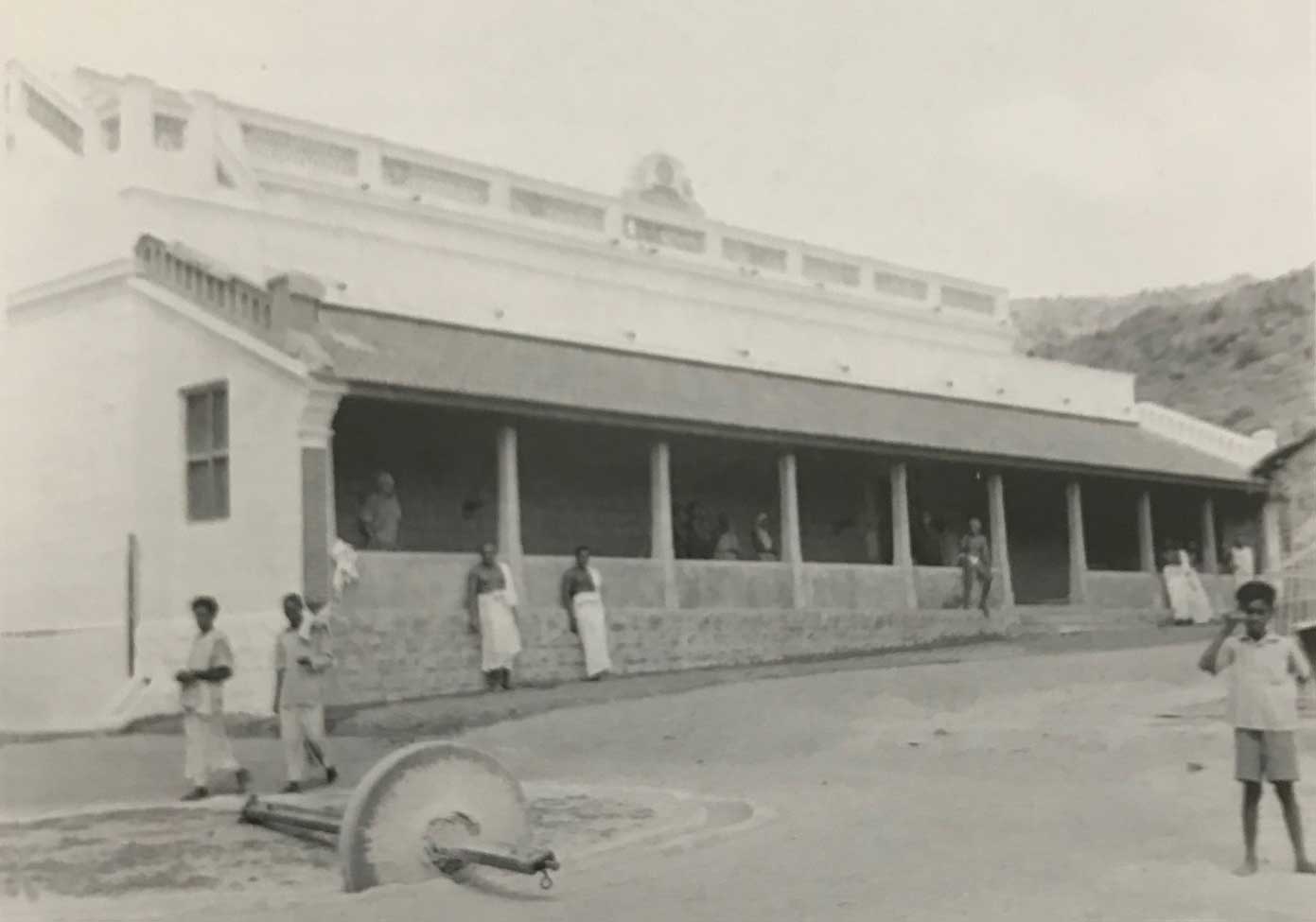
Bhagavan had to play a trick to get me help
Once Bhagavan asked me to construct some steps on the ashram side of Pali Theertham so that devotees could easily walk down to the water.He took me to the tank, showed me where he wanted them and how wide they should be.
But first several heavy boulders had to be removed. It was too late in the day to hire any workers, so I tried to move a few. They were too heavy for me. I tried asking multiple sources in the ashram to lend me their workers but no one was willing to help. I went back to Bhagavan, told him that I could not move the rocks by myself, and that Ramaswami Pillai had refused to lend me any of his workers.
Bhagavan listened to my problems and rather surprisingly said, ‘Since you cannot find anyone else to do the work, I will come and help you myself’.
Bhagavan walked to the tank and pointed out a large protruding rock. ‘We can start with that one,’ he said.
As we were straining to lift it, Bhagavan’s towel slipped from his shoulders and fell into the mud. The rock was too heavy for us. We managed to lift one side of it a few inches but no more. Bhagavan told me to release the rock, saying that it was too heavy. As it fell to the ground it trapped Bhagavan’s towel firmly in the mud. Bhagavan then surprisingly abandoned both the work and the towel and returned to the hall.
I went up to Chinnaswami and said, ‘Do you know where Bhagavan’s towel is? It is stuck in the mud under a rock in Pali Theertham.’ I took him there to see and gave him a summary of what had happened. Chinnaswami was shocked to hear that Bhagavan had been obliged to work as a coolie because I couldn’t find anyone else to help me. He went to Ramaswami Pillai and had him send all his garden workers to the tank to work for me.
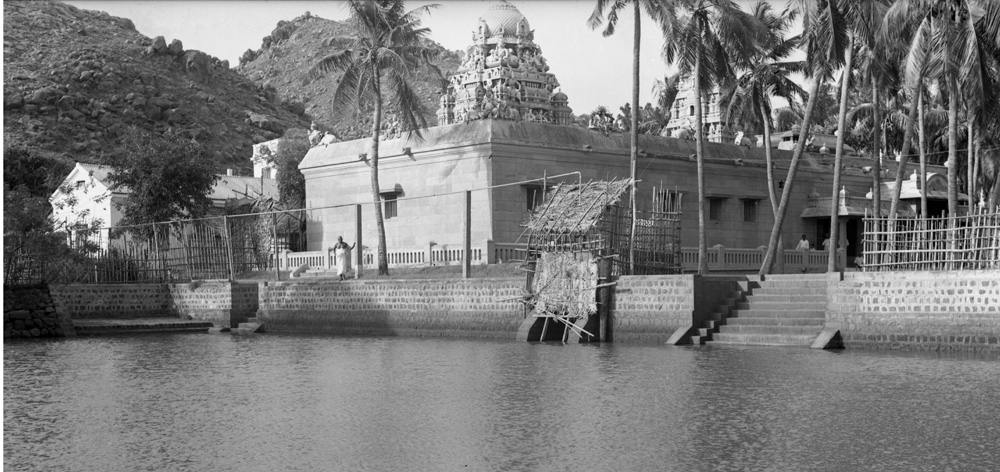
Be aware of the Self while working
Despite my busy schedule Bhagavan once insisted that I memorise the ten verses from Sivānanda Lahari which he himself had selected.
On another occasion he told me, ‘If you want mōksha, copy this book [Ellām Ondrē] into your notebook. Then study it and live according to its precepts.’ I told Bhagavan, ‘Your are keeping me very busy. I have no time for copying. If someone else writes it down I will happily read it and study it.’
Bhagavan refused to accept my excuse. ‘You have time to write your mekkedu (daily tally of workers wages). Are you trying to get mōksha by paying a price for it? I asked you to write it yourself because if you do it this way it will get impressed on your mind. If you write it once it is the equivalent of reading it ten times. Write a little every day. There is no hurry. Even if it takes a month you should do it yourself.’
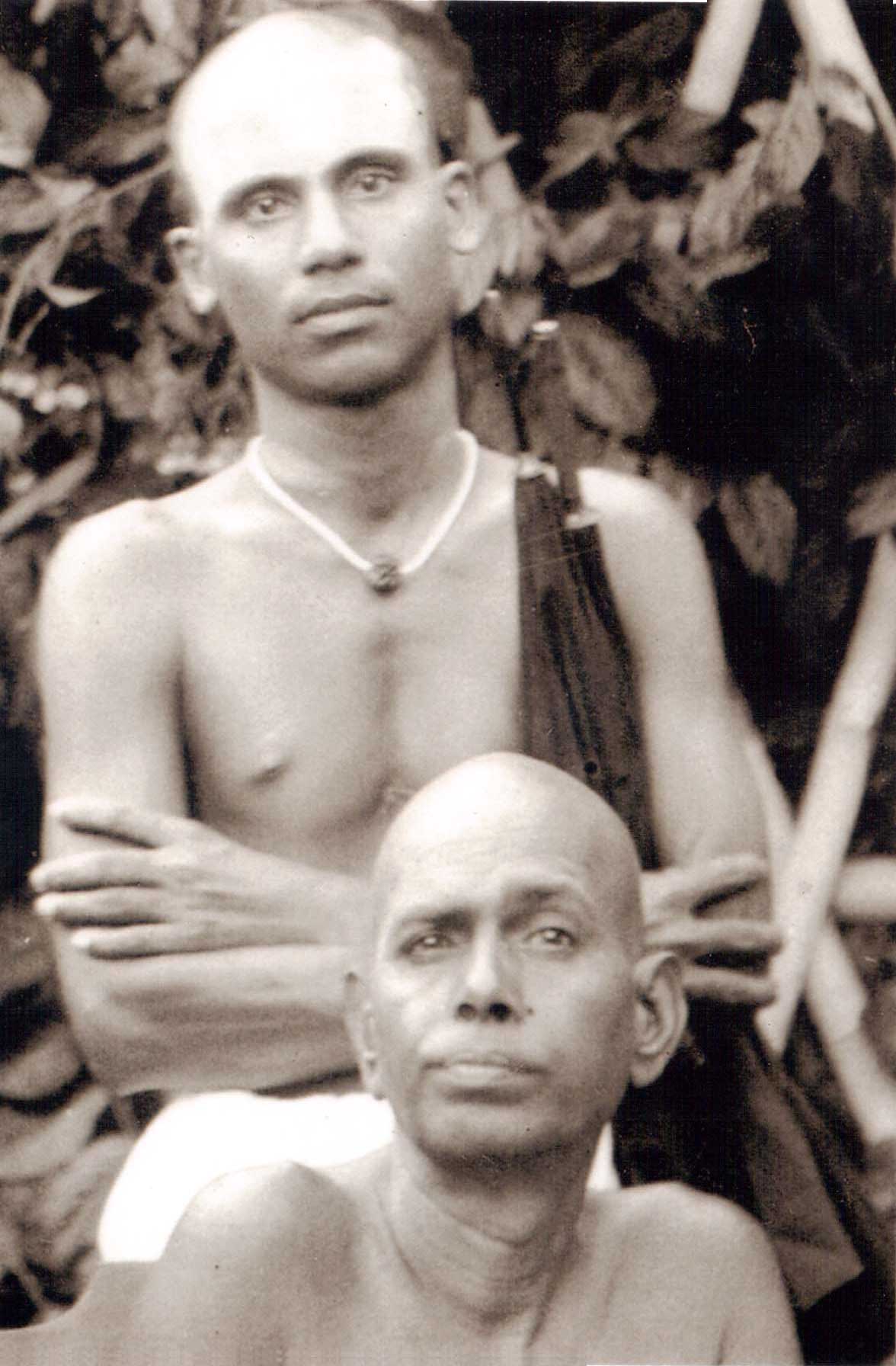
From that day on I put aside a little time daily to do the copying. Bhagavan himself assisted me by writing down the headings for each chapter on the contents page of my notebook. He also completed the copying by writing the last line himself. When the copying was over he went through the notebook and corrected all my mistakes.
Meditate continuously
Bhagavan frequently told me, ‘Don’t forget your real nature. It is not necessary that you should sit and meditate. You should meditate all the time, even while you are working.’
In the beginning when I first came to Bhagavan, I had asked him for a mantra. In response he told me to repeat ‘Siva Siva’ continuously. Later, Bhagavan advised me to keep my attention in the Heart while I was working. I had assumed that Bhagavan wanted me to concentrate on a particular centre on the right side of the chest. However, when I had started to practise in this way, Bhagavan stopped me and corrected me.
This right-side Heart-centre is not the true Heart,’ he said. ‘The real Heart is not located anywhere. It is all-pervasive. Stop meditating on the Heart-centre. Find the source. That is the true Heart. Just as electricity comes not from the individual meter boxes in people’s houses but from a single source, so too the whole world has a single source, which is the Self of the Heart. Seek and enquire into this source of limitless energy. If the centre of the Self were really located in the body, the Self would die when the body dies.

I understood from these remarks that just has one cannot experience the nature and source of electricity by staring at the meter box in one’s house, similarly, one cannot gain a direct experience of the current of the Self by concentrating on the heart – Centre. I gave up concentrating on this Centre and tried to follow Bhagavan’s advice.
In order to keep my attention on the self while I was working I adopted, with Bhagavan’s permission, the traditional approaches of nēti nēti (not this, not this) and affirmation: ‘I am not the body and the mind; I am the self; I am everything.’
Note: The decision to follow this approach must have been so strong, that with continuous practice of it and surrender, Bhagavan’s grace led Sri Annamalai Swami to spiritual enlightenment. This is revealed by his teachings, in which he continuously stresses this one thing: ‘Always remember, you are not the body or mind. You are the Supreme Self.’
Initiation by Touch – Hasta dīkshā
I must mention that I once received a kind of Hasta dīkshā from Bhagavan, although Bhagavan himself would undoubtedly deny that this was his intention. It happened in the old dining room. there was a tap there which was the main source of water for the ashram. Devotees used to fill their buckets there and some even bathed there. As a result the ground was quite muddy around the tap. Bhagavan asked me to make a brick and cement platform around the tap. I did the work while Bhagavan sat nearby in a chair. At one point I stood up and accidentally banged my head on the tap. A large bruise appeared almost immediately.
I was thinking, ‘Bhagavan always says I am not the body. Why should I make a fuss over a little thing like this?’ Then another thought came to me. That this was a blessing! ‘It is only because of this accident that I have got the good fortune of getting both of Bhagavan’s hands on my head.
Although I was not first aware of it, Bhagavan is now blessing me with Hasta dīkshā’.
Bhagavan’s care for me
When the construction of the garbagriha (inner shrine) of the Mother’s Temple was nearing completion, Bhagavan asked me to paint the name of the temple Mātrubūtēshwarālayam (Temple of God in the form of the Mother) on the front wall. If one looks over the entrance one can see two elephants carved out of stone. Under their feet is a stone scroll, where this name is carved. Bhagavan wrote this name in Sanskrit for me so that I could make a stencil and then paint the letters on the scroll. Later one of the sculptors would carve the name by chiseling out the area covered by my painted letters.
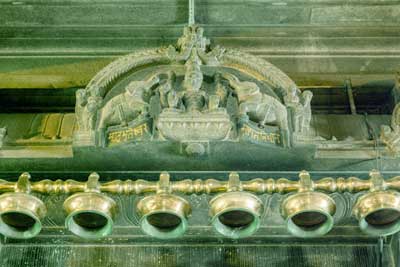
I sat in Bhagavan’s presence in the hall, carefully cutting out the name. I kept all my attention on the work because I knew that I would not be able to get away with even the smallest of mistakes. At about 3 p.m. Bhagavan used to go out of the hall to urinate. At that time, as he stood up, everyone in the hall stood up except me. I was in the middle of cutting out a letter and did not want to spoil it. I heard someone say behind me, ‘Bhagavan has stood up but this man has no respect. He is still sitting on the floor.’
Bhagavan also must have heard this because he seemed to change his mind about going outside.
Instead, he came and sat next to me on the floor. He put his hand on my shoulder and watched intently as I finished cutting out that letter. Then, without bothering to take his expected trip outside, he got up an sat on his couch again.
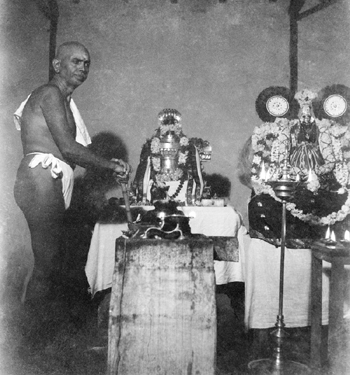
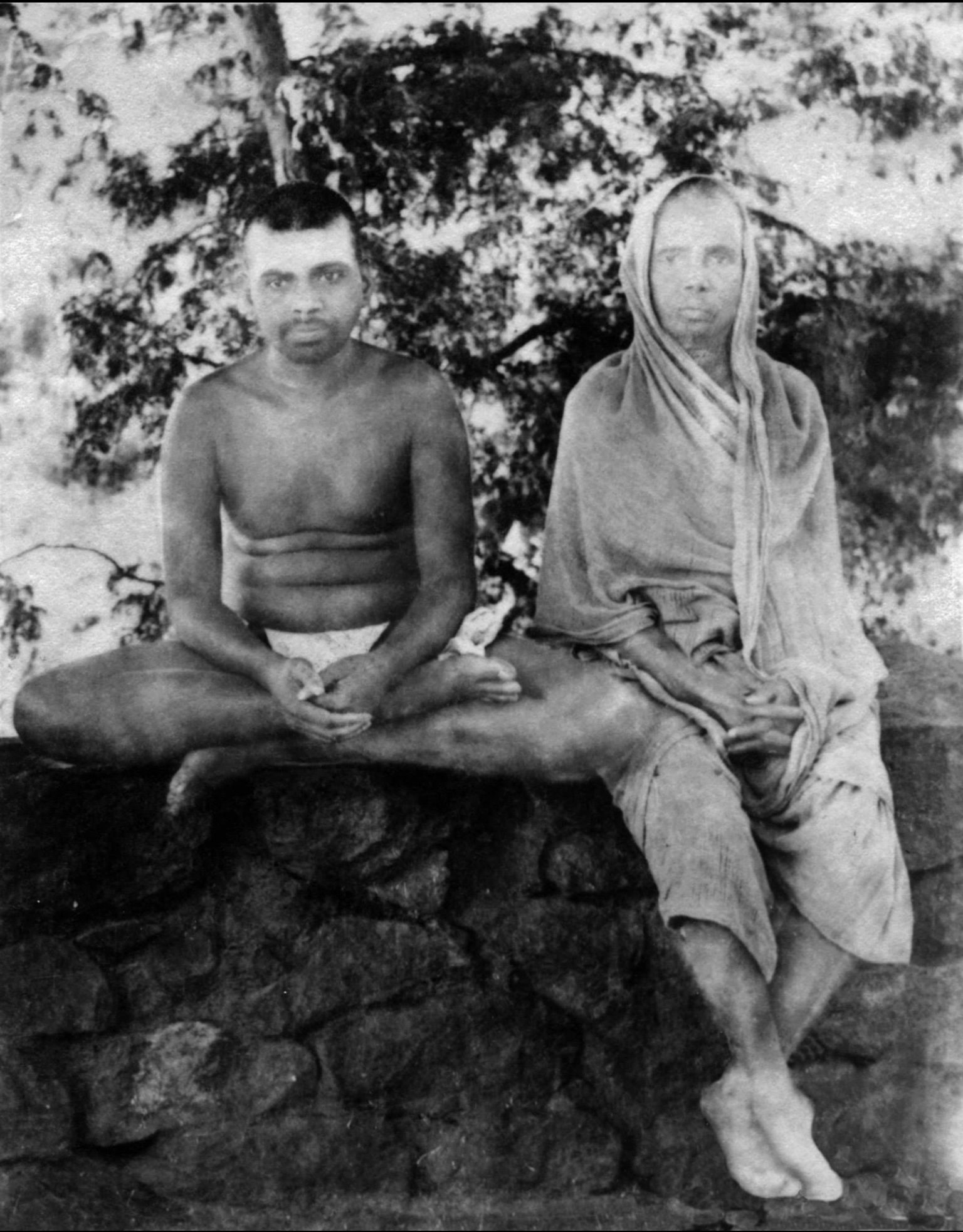
Another miracle by Bhagavan
When the Mother’s temple was nearing completion an expert sculptor was commissioned to make a Yogambika statue out of five different metals for the temple. The pouring of the metal had to be done at an auspicious time and the astrologers had said the casting should be completed between 8 p.m. and 11.30 p.m. that day.
The sculptor started his fire at 8 p.m and worked very hard for several hours but was unable to get the metals to melt in the crucible. Even I who was not an expert, could see that the fire was very, very hot and the sculptor was struggling even to go close to it and had to use a pair of very long tongs. When 11.30 came and went, I felt justified in waking up Bhagavan. I went to the hall, explained the situation to him and asked what we should do. Bhagavan made no reply. Instead he got up and came to see for himself how the work was progressing.
All of the above memories were narrated by Sri Annamalai Swami himself, during his Satsangs with devotees who came to visit him at the Ashram.
Related Content
10. Samadhi Experience
This incident happened in 1938, ten years after Sri Annamalai Swami came to Ramansramam to serve Bhagavan Ramana Maharshi. It had such a profound impact that it ended his construction work and prompted him to…
11. Life in Palakothu
Palakothu is an area of land immediately to the west of the ashram. Several of Bhagavn's devotees who didn't want to stay full-time in the ashram lived and meditated there. Sri Annamalai Swami moved to…
12. Physical separation
By severing the personal link between us, Bhagavan was trying to make me aware of him as he really is. Bhagavan had frequently told me that I should not attach a name and form to the Self or regard it in any…
